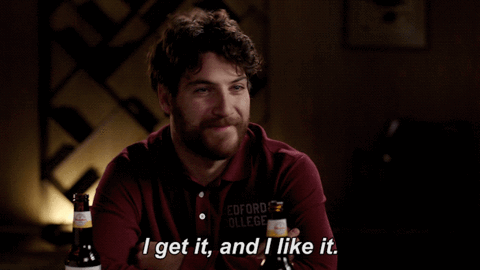It’s the bane of all youth leaders.
Lock-ins. A time when youth gather to chill, leaders long to chill out, and parents rejoice ‘cause they can chillax’. A time when sugar rushes increase, pizza slices decrease…and, of course, a time when the whole world starts to smell like Mountain Dew and corn chips.
No question, if you’ve ever served in youth ministry, you know what it’s like to love and hate lock-ins; yet, regardless how you feel about them, one thing is for sure: youth show up! Thus, how we approach and frame the event is worth discussion.
Quick note before I continue: while future resources will break down lock-in strategy accordingly to group size, location, and infrastructure, for now, I’m going to focus on four practical points that can help you in your lock-in prep and leading.
Let’s dive in, shall we…

1. Don’t just plan in advance; pray in advance.
As an architect of nine lock-ins, I’ve found two of the biggest mistakes youth leaders make is overvaluing entertainment and forgetting to pray before planning. I know for me, there have been many times when I started brainstorming connection strategies (i.e. youth to God, youth to youth) only to get sucked into the “this can’t happen apart from engaging activities” undertow.
Granted, dance-offs, Wii/Guitar Hero tournaments and ice cream sundae bars all have a place; however, it’s only when their ‘place’ becomes defined in the context of ‘primary objective’ that the event they happen in can reach its full potential.
So while it’s true the key to quality prep is developing a game-plan from rightfully aligned priorities, when you pray before you plan, not only do you surrender yourselves to God’s agenda, but you free yourself from prematurely tackling your own.
Bottom line: If you want your lock-in to be all it can be, don’t rely on what’s worked in the past or for ‘x’ group; rather reset the slate and pray before you plan.
2. Don’t ‘dele-hate’; delegate.
Lock-ins provide a great opportunity for youth leaders and/or youth parents to step up. I remember a few years back during one particular lock-in, I had youth serve neighboring communities through random acts of kindness before returning to church. The problem was since we didn’t have a church bus at our disposal, I couldn’t transport all our youth at once. Thus, I had no choice but to call a few parents and request assistance.
Now, I admit: as an independent introvert, I wasn’t too excited making my needs known at first; however, as it turned out, talking to parents proved to be liberating in the sense it allowed me to shed light not only on event vision but group vision.
As for my youth team, I gave each leader a different contact sheet with instructions on inviting their list of youth reminding them it wasn’t about numbers or outcomes, but making as many youth aware they were welcome.

Bottom line: Never hesitate to delegate. When you invite parents and youth leaders to get involved, you spread the word more effectively.
3. No free admission.
I know many believe lock-ins should be zero-dollar events, but to be honest, I’m not one of them. Yeah, I respect the approach; at the same time, I’ve found ditching the free admission concept to be more beneficial since it gives youth the chance to turn cash into something they can contribute.
For example, with our lock-ins, I remind the youth each year to bring an ice cream sundae bar topping (along with their belongings/consent form) instead of an admission fee. In this way, each attendee has an opportunity to provide something that makes the lock-in better.
Bottom line: Convert admission into provision. After all, it’s not about the money; it’s about the giving.
4. Turn out the lights.
Not to sound contrarian, but lock-ins and all-nighters don’t have to be synonymous.
Yeah, I know there’s this notion that says staying up just for the sake of staying up is cool, but as many a youth leader will tell ya, a cat nap at a lock-in is often a wise move.
Case and point: a few years back, my wife and I hosted a “Minute to Win It” lock-in with feature games at the top of every hour. While the theme proved to be a huge hit, perhaps the smartest move for that event was establishing the grand finale game at 2:00 am and using it as ‘halftime’ dividing high-energy activity from wind-down time.
Now, for all you lock-in leaders out there, is it ideal to have every fifteen minute segment blocked? Technically, yes; however, the way I see it, with any lock-in, the second half should be the most customizable. Personally, I prefer designating the 2:00-6:00 am time frame for watching movies, playing cards/board games or contained group activities conducive to dimmed lighting. That way youth who need rest can find it and those who don’t need it can continue on with slightly quieter forms of fun.

Bottom line: Don’t be afraid to encourage rest during a lock-in (i.e. say ‘no’ to non-alcoholic hangovers





